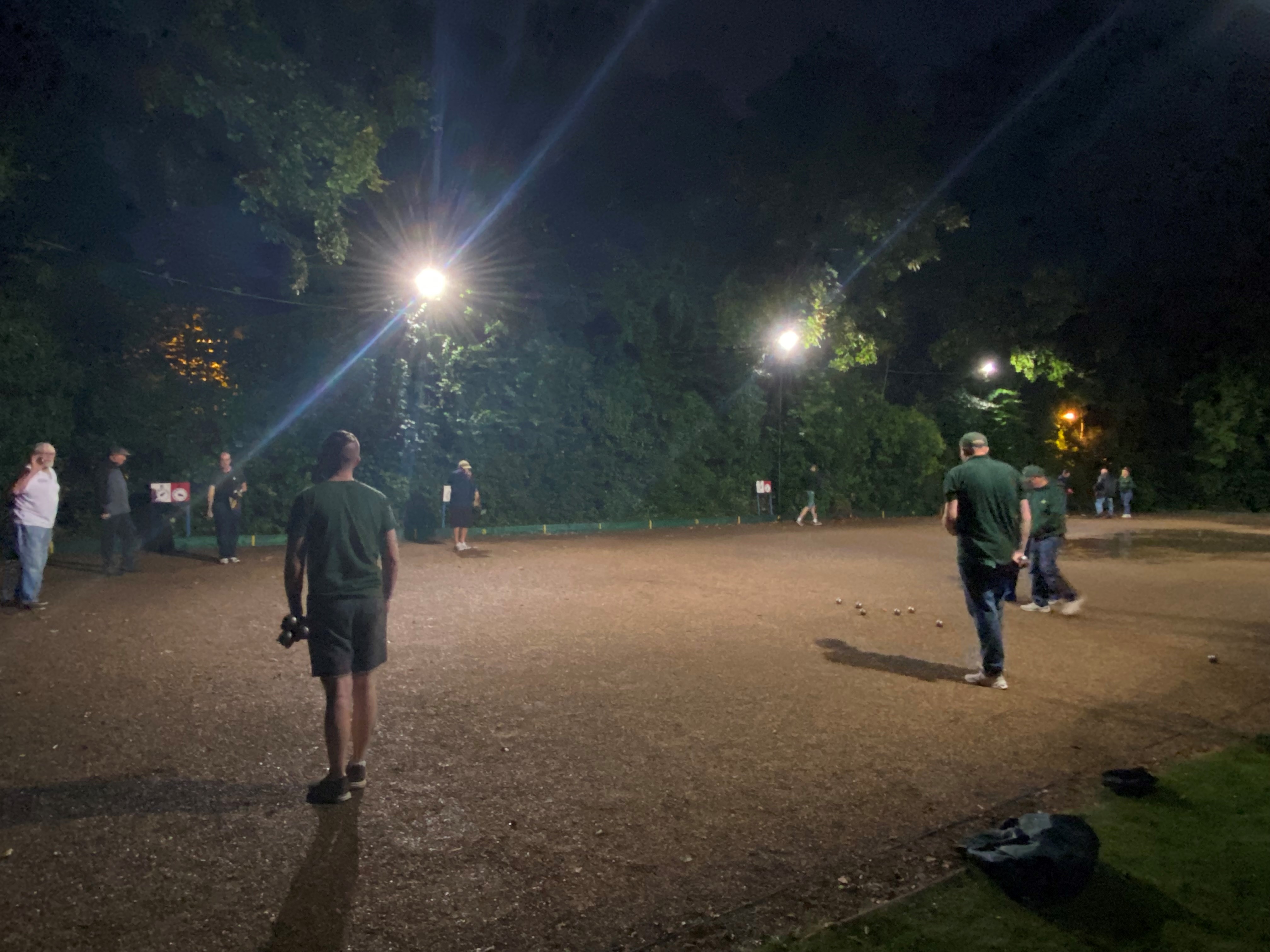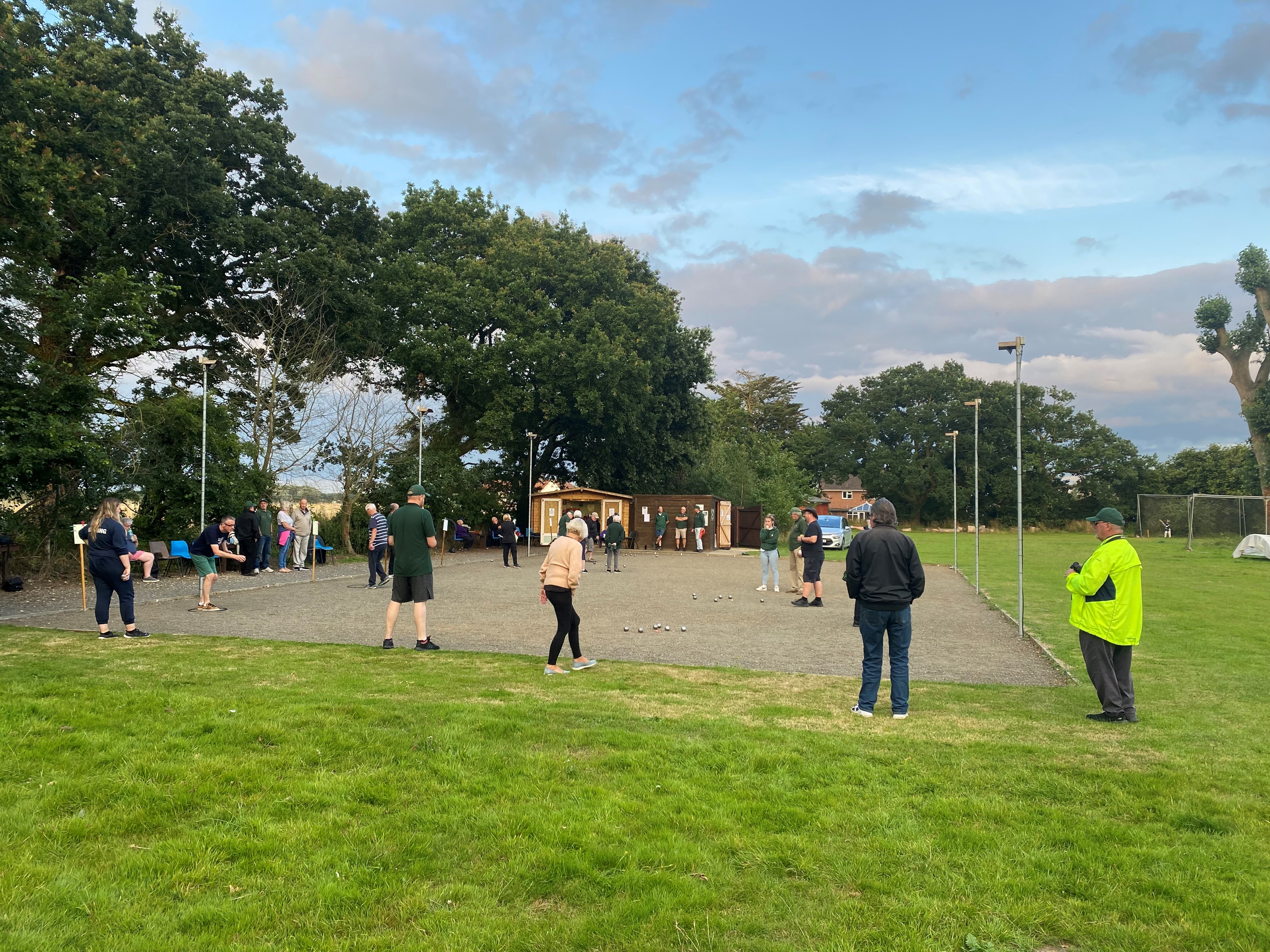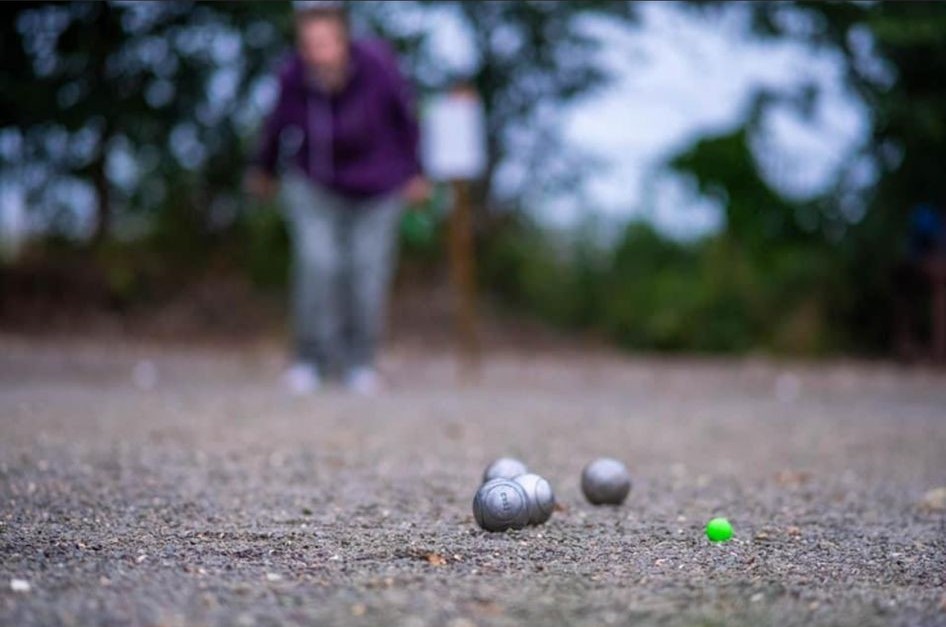Welcome to 51 Pétanque Club
51 Pétanque Club was established in 1980 and is located on the Recreation Ground in the village of Gt Ellingham. New players are always welcome (equipment can be provided) just come down to one of our regular social mornings.
Regular social mornings are on;
League nights are Thursday evenings at 7.30pm
Upcoming Events
51 Pétanque Club have the below events scheduled in 2024:
Sunday 5th May - Spring Intra-Club Pairs Melee. 10.30am start.
Friday 24th May - Bingo @Gt Ellingham Rec Centre. 7.30pm start.
Sunday 2nd Jun - APA Inter-Regional Qualifier. 9.15am start.
Sunday 14th Jul - Bastille Day Intra-Club Pairs Melee. 10.30am start.
Sunday 8th Sep - Autumn Intra-Club Pairs Melee. 10.30am start.
Sunday 22nd Sep - Bob Bruce Memorial Pairs. 10.30am start.
Friday 27th Sept - Beetle Drive @Gt Ellingham Rec Centre. 6.30pm start.
Sunday 13th Oct - Open Pairs Melee. 10.30am start.
Thursday 21st Nov - Bingo @Gt Ellingham Rec Centre.
Saturday 7th Dec - Christmas Party @ Gt Ellingham Rec Centre.
Please register any interest in these competitions by using the Contact Us details below.
Teams
51 Pétanque Club have teams that compete in the Norfolk County Pétanque League and the City of Norwich Winter Pétanque League.
Summer - Ellingham Oaks, The Millers & Ellingham Acorns - For the 2024 season Ellingham Oaks will play in Division 1 after coming 2nd in Division 2 and earning promotion. After relegation from Division in 2023 The Millers will play in Division 2 and Ellingham Acorns playing in Division 3.
Winter - Packso 51, Social 51 & SnowBoules51 - For 2023/2024 season, Packso 51 will play in the Premiership, Social 51 will play in Division 1 and new team SnowBoules51 starting in Division 3.


Club History
1980 - The club was founded by Nick and Margaret Mitchell along with Claudine Guilmain at the Victoria Inn Public House. The club enters the NCPA League, starting the journey of Great Ellingham Pétanque Club
1985 - The club moves to the Eight Ringers Public House in Hingham and is renamed Hingham 51
1991 - In a turn of events the club makes the move back to Deopham and is renamed Victoria 51
1995 - Our Country Yokel Badge is introduced
2001 - Due to a rise in players the club expands to 2 teams. Gauloises won Division 3 in 2003 and Gitanes won Division 3 in 2002
2005 - With the sad loss of one of the club's members the Club Competition is renamed The Bob Bruce Memorial Pairs to which is still a fantastically popular and respected competition to play in of which he would be proud. Gitanes win Division 3 again
2008 - Gauloises won Division 3 again
2009 - The club moves to the Buck Public House in Morley St Botolph and the club is renamed, taking its name from the Pastis 51 drink to become; 51 Pétanque Club
2010 - The Gitanes change their name to Buckaneers
2016 - The Buckaneers disband. In the same season the club moves to Scoulton Village Hall with just the Gauloises team while the new terrain is being built at Great Ellingham Recreation Centre
2017 - 51 Pétanque Club starts a new era with the Gauloises team now named as The Millers and a new team called Ellingham Oaks created. During the first season, Ellingham Oaks gained promotion to Division 2
2020 - No league play due to Covid
2021 - As a response to Covid pandemic, friendly leagues played. The Millers win Div3
2022 - The Millers place 2nd in Div2, earning promotion to Div1
2022 - Ellingham Oaks place 2nd in Div2, earning promotion to Div1. The Millers relegated to Div2.
What Is Pétanque
The game of Pétanque is a form of boules which originated from the south of France, where the goal is to throw metal balls as close as possible to a small wooden ball called a cochonnet or jack. The game is normally played on hard dirt or gravel or sand. Pétanque can be played in public areas such as parks but many dedicated facilities have been built.
How To Play
Pétanque is played by two teams, where each team consists of one, two, or three players. In the singles and doubles games each player has three boules; in triples each player has only two. First of all, the home team will flip a coin with the opponents calling heads of tails to determine who will throw the cochonnet. The starting team draws a circle on the ground which is 35-50 centimetres in diameter, plastic circles are often provided and must be marked to show the location so it isn't moved during the end being played, all players must throw their boules from within this circle, with both feet remaining on the ground. The first player throws the jack 6-10 meters away for the end to commence. The team that has thrown the cochonnet will play their first boule. A player from the opposing team then plays their boule and will continue to throw until they are closer to the cochonnet than the opponents boule or they use all their boule up. The teams switch depending on who is closer to the cochonnet and once both teams have used all their boule a point is scored for each boule closer to the cochonnet than your opponent's closest boule. For example: If you have 3 boules closer to the cochonnet before your opponent's closest boule, you will be awarded 3 points and throw the cochonnet on the next end. Place the circle around the cochonnet and as long as you are far enough away from the edge of the terrain and can throw the cochonnet the correct distance you may start the next end. This will continue until either the time limit is reached (if playing a timed match) or one of the teams reach 13 points to win the game.
Throwing Technique
When standing in the circle with your feet within its boundaries you must either throw your boule underarm with an open palm or with palm down still underarm but as you throw extending your arm and having an upward flick of the wrist which will put a little bit of backspin on your boule giving you more control.
